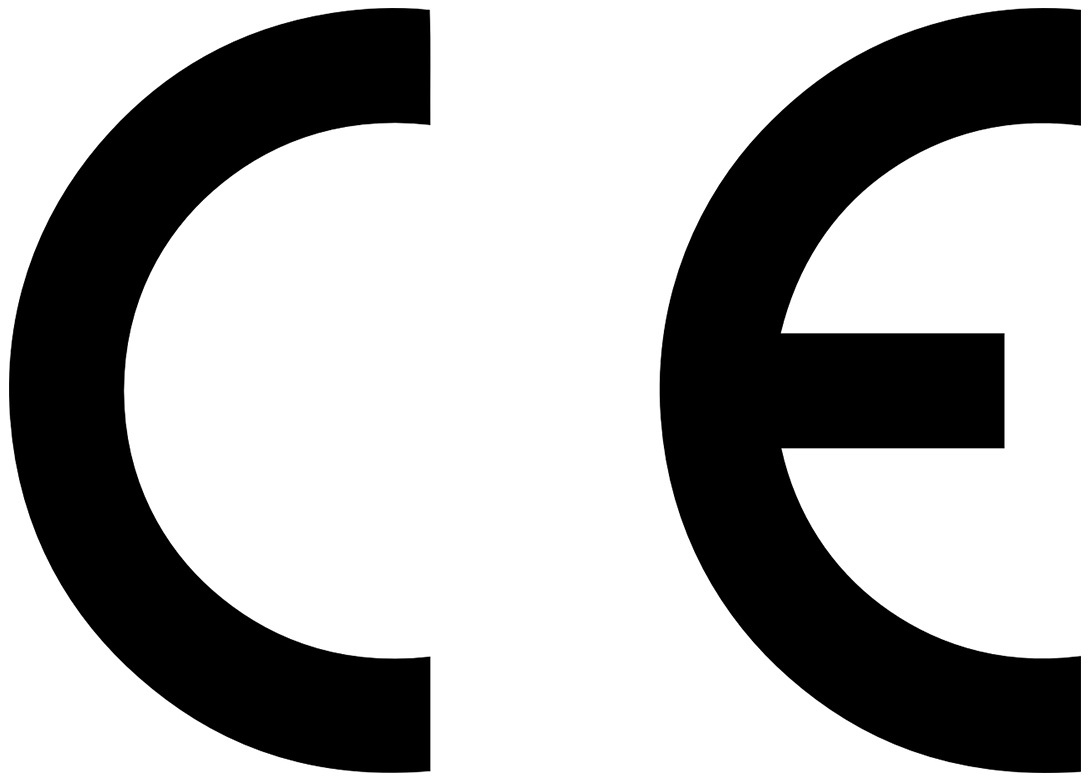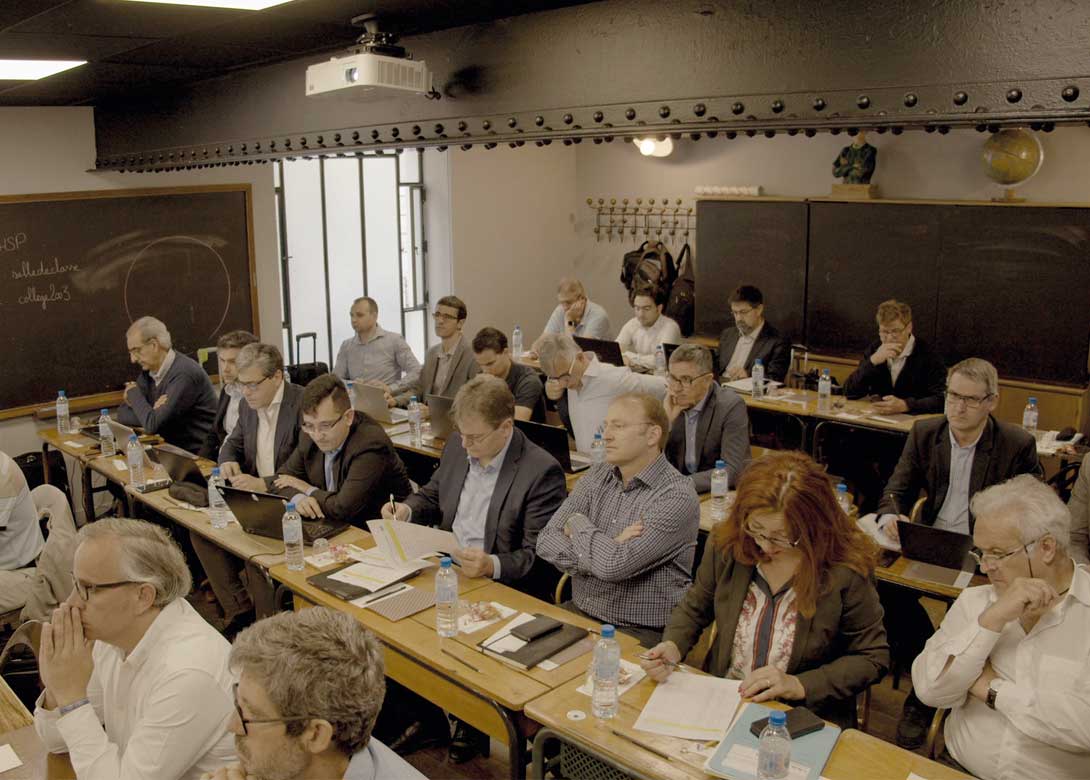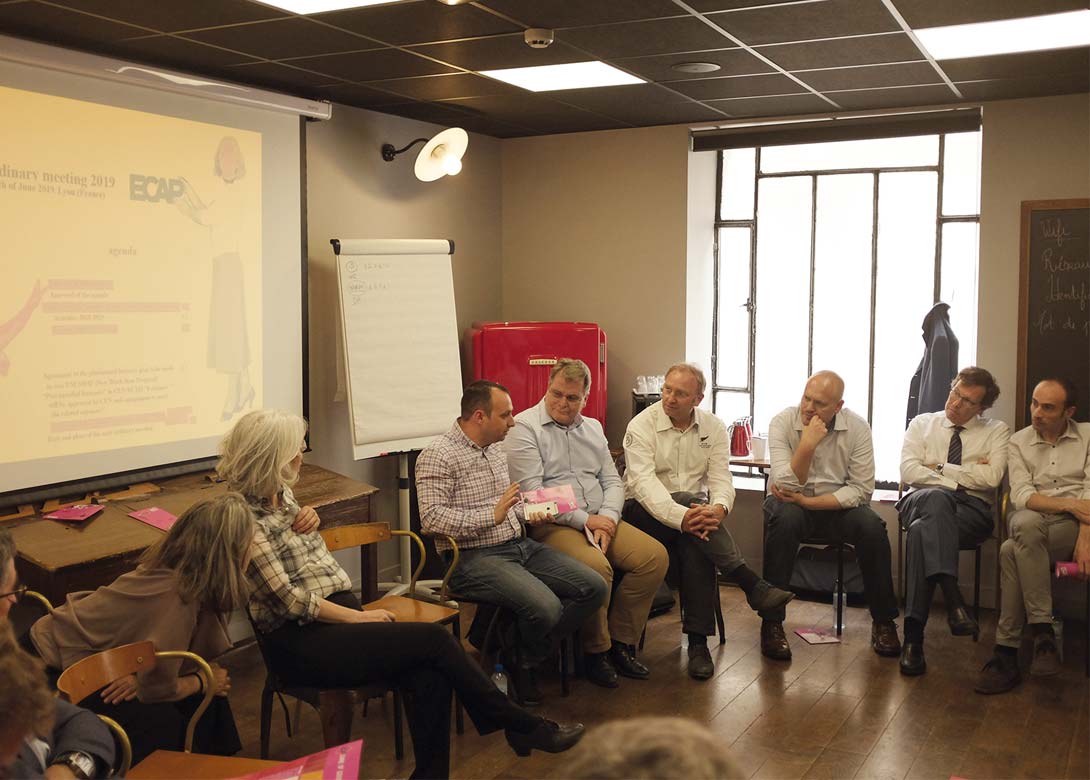
Drawing strongly on her personal experience, Barbara Sorgato, secretary general of the European Consortium of Anchors Producers, presents a characteristically impassioned and thoroughly reasoned argument for a fundamental change in the basis for CE Marking post-installed fasteners for concrete and masonry. Inevitably there will be diverse, indeed polarised, views on this important subject and this magazine will invite others to contribute to the debate.
In May 1999, I had just started working for a manufacturer of bonded and metal anchors. I was working on a project with a customer about fixing a beam in a concrete wall with a bonded anchor.
We discussed the weighted average of the test results – 90% fractile or 95%?; about applying a safety factor of seven instead of five, because, you know, masonry and concrete walls are not an exact science, tests made in laboratories are fine but you never know what you will find in the job site and… ‘did I tell you what I have seen on a jobsite two weeks ago?’ And so on.
Downloading emails, I found one from a British colleague. He was quite worried and reported an ongoing process of CE Marking on anchors. I called him.
Major manufacturers started writing technical rules tailored to their products, he said. No, not a standard, but an ETAG, something different. ETAGs, he explained, were the basis for ETAs which, together with the FPC certification, was the basis for a AVCP system 1 CE Marking – basically a European copy of a ‘Zulassung’. I couldn’t quite cope with all these acronyms, so I interrupted and asked: “Why not a standard?”.
After a moment of silence, the colleague said that, apparently, someone managed to classify anchors as a special, innovative product that needed a special CE Marking – something ‘stronger’ than a normal European standard.
I stopped posing this question 23 years ago – and had to accept that CE Marking on anchors approached them not as a products, but rather as tailored systems. The CE Marking of anchors certifies not just the anchor, but the anchor tested in a certain specific detailed context, which includes a detailed definition of base material, temperature conditions, simulated mistakes of installation and other job site mistakes.
There were many ways this approach might be denounced. Such a system-based approach was creating enormous costs entirely borne by anchor manufacturers. It was neither fair nor sustainable for SMEs. Many tests were unnecessary or unrepresentative. Marketing by the big players forced SMEs to get CE Marking even though it was (and is) optional. Testing in laboratories does not simulate the reality of a job site. Fighting over the last Kilonewton for marketing purposes does not make a product safer. None of these, however had any short term effect. The path was opened up, the marketing campaign on ETAs was massive – and small manufacturers had to follow, if they wanted to continue selling.
Committing nearly €200,000 to CE Marking a product required very serious financial planning. SMEs managed to budget for the CE Marking of a few products and, through ECAP – their only route to gain access to the EOTA drafting tables – started to get involved in the EOTA system. Ultimately, this CE Marking could prove to their customers the high-level of their products.
Acting through the ECAP platform implied sharing. Political and technical decisions on the present and the future of their products, up to date technical knowledge through research, access to innovation through EU projects and the costs and updates of two Eurocode-based calculation programs. Members invested more and more in ECAP and in ETAs. After some years, they became active participants of the EOTA system, starting from its Working Group.
Around the table of the EOTA Working Group sat Approval Bodies (today called Technical Assessment Bodies or TABs), universities, multinationals and, since 2001, ECAP small and medium sized manufacturers – all working together to define appropriate test and assessment methods, each one adding grist into the mill. Good old Europe.
We got used to working in a similar manner to standardisation but in a much more flexible system: A closed group of stakeholders, no member state weighted voting, a few approval bodies driving the process. The market got used to ETAGs and ETAs, approval bodies and labs multiplied, and prices sunk a bit.
Until, in 2011, the Construction Products Regulation came. This regulation aims to support SMEs and, by eliminating national markings and approaches, strengthen the European standardisation system.

For EOTA, weakened by this approach, things started to change radically:
Impossible names? Who cares, because:

Nothing was as it was before and yet everybody tried to continue as if nothing changed. Everybody, included SMEs, wanted to keep the status quo as it was under the Construction Products Directive before 2011. Until, in 2018, the delicate balance broke.
On one side EOTA maintained a Working Group, which was not foreseen in the CPR because it had got rid of the ETAG concept. On the other side EOTA also followed the CPR by allowing Technical Assessment Bodies and manufacturers to issue EADs for single manufacturers.
The result was that, while the EOTA Working Group experts together elaborated revisions of EADs, they also found that some of their colleagues, TABs and manufacturers, had at the same time silently elaborated single EADs on characteristics and uses that were of interest to the whole working group, or on variants of EADs.
The CPR requires that EADs remain confidential within EOTA. Because everything was done under the CPR auspices, manufacturers could only discover the content of the new EADs after they were made public by EOTA. But then, what is the sense in having a Working Group dealing with EADs as ‘common work’? And what kind of working atmosphere and trust can exist in this Working Group?
In 2019, the proliferation of new ‘individual’ EADs and of ETAs, with ad-hoc technical changes to the main EADs (i.e. EADs transferred from ETAG 001), has increased drastically. That makes it a challenge even for experts in the sector to compare the different EADs. Several new individual EADs are popping up, some of them just referring to main EADs and adding just a little technical addition or change.
The marketing trend on ETAs developed years ago. One must update ETAs to the “last version of EADs”– even if, in this moment, it is not clear which is the last version of what. So, everybody is running behind new issued EADs and updating ETAs – and related DoPs, and labels, and websites, and certificates, and catalogues – just to sound updated.
This leads to a crazy waste of money and marketing without technical added value; confusion on the market; as well as huge efforts for SMEs to explain how things are to customers that are not involved, nor wish to be, in this confusion. Can this work any longer?
Because it is the European Commission, hence European taxpayers, that pay the EOTA costs for issuing an EAD (not the manufacturer. The manufacturer pays for the ETA and the tests and the FPC and all around the CE Marking), the Commission is now trying to control the proliferation by asking EOTA to merge individual EADs into main EADs.
However, merging individual EADs to ‘main’ EADs is the wrong way, as it faces discrepancy of approach, of robustness and of safety levels between similar ETAs. That has already been experienced during the transfer of ETAGs into EADs, where discrepancies between ETAs issued by different TABs became tangible. Whilst main EADs were discussed extensively together, single EADs find individual solutions for complex and interrelated issues that were previously discussed in a group and, in the past, required research and discussions – as they did not have easy answers.
The actual system makes it impossible to continue having, as was the case until 2011, one set of technical requirements which apply, without the possibility of adding singularly technical changes or modifications, to all anchors.
Hence, 23 years later, in a dedicated General Assembly in Brussels, ECAP members met to deal with the same question I posed on the phone in 1999: ‘Why not a European Standard?’
SMEs from nine different Member States discussed, for a whole day long, all the political, marketing and economical aspects of a change of system. Manufacturers had different views on several things, depending on their size, their marketing approach and their investment in ETAs. In the end they agreed, they all see that, despite several attempts and proposals to rule out the proliferation of EADs, the actual legislative framework no longer provides for continuity and for a shared and adequate technical level under the EOTA system.
They unanimously agreed on the need to keep the high technical level reached by the main EADs, which should be used as a basis for a harmonised European standard on post-installed fasteners. The future standard should be further developed to include European technical common topics, under discussion or not yet developed at EOTA Working Group level, enabling manufacturers to use test results already obtained via the EAD route, instead of having to retest their products.
They see and share the concern of colleagues on the economic burden of a mandatory CE Marking based on a European Standard instead of the EOTA voluntary one. On the other hand, they consider that a product, which is relevant for the safety and stability in buildings, should have a mandatory CE Marking.
They consider that the industry will benefit from a standard created on the basis of a wider consensus, including a wider part of the industry, particularly SMEs, and various stakeholders, which will be able to access the standardisation tables through their national mirror groups, enriching the level of the standard.
These considerations resulted in a CEN internal balloting, which is now ongoing in CEN TC 185 ‘Fasteners’. If you wish to express your opinion, contact your national CEN member (AFNOR; AENOR; BSI, DIN, UNI, etc) and have a say in this important vote.

Barbara Sorgato is secretary general of ECAP - European Consortium of Anchor Producers. ECAP is a unique case in Europe of a transnational sector group of SMEs that joint their efforts in standardsation, sharing the costs of its European activity and of related high tech services.
Don't have an account? Sign Up
Signing up to Fastener + Fixing Magazine enables you to manage your account details.